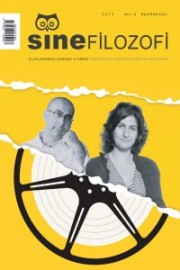Behram Beyzayi Sinemasında Kadın İmgesine Bir Bakış: “Başu, Küçük Yabancı” Örneği
A View of the Image of Woman in Bahram Beizai’s Cinema: An Example of “Bashu, Little Stranger”
Author(s): Mehmet AytekinSubject(s): Gender Studies, Semiology, Aesthetics, Islam studies, Film / Cinema / Cinematography
Published by: Serdar Öztürk
Keywords: Iranian cinema; Bahram Beizai; myth of woman; patriarchal ideology; feminist critical discourse analysis;
Summary/Abstract: When the social dynamics of pre-revolution and post-revolution era are examined, the existence of transition process is remarkable and it is seen that there is an uncertainty. In the ongoing process, this situation is reflected in the cinema, it is understood that “male gaze” and the efforts of patriarchal ideology to shape the cinema have a negative effect the representation of woman. Pre-revolution era, in the process of representation, the woman who put up a good fight against to exhibitionism, at postrevolution era was forced to veil oneself by the effects of Islamization movement, and thus the cinematic representation is adversely affected. In Bahram Beizai’s cinema, a oppostional reading is developed for the mainstream female myth that patriarchal ideology deals with in both periods, and this form of reading becomes continuous both pre-revolution and post-revolution era. In order to makes the claim, Bahram Beizai’s Bashu, Gharibeye Koochak (Bashu, Little Stranger - 1989) movie is taken as a sample and cinematographic analysis method is adopted through feminist literature. In this context, the counter-myths created by Beizai are embodied by the sequences supporting the narrative and the theoretical background of feminist critical discourse analysis is utilized in the process.
Journal: SineFilozofi
- Issue Year: 5/2020
- Issue No: 9
- Page Range: 481-503
- Page Count: 23
- Language: Turkish

